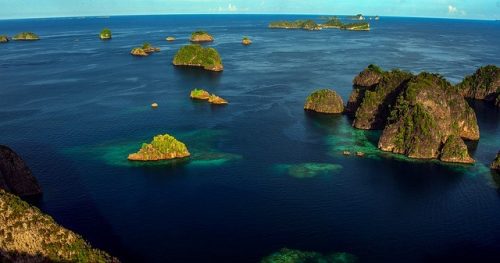Landscape Photography
When shooting landscape photography, it’s important to define your subject. If you’re shooting wildlife photography, your subject is obviously the animal. When it comes to landscape photography, however, defining your subject can be more difficult. When you arrive at your destination, don’t just start snapping away because it looks pretty. Look through your viewfinder, and find photos of nature that stand out? It might be a river, a rock, or even clouds. Sometimes you stumble upon beautiful photography scenery and you want to capture it all at once with your wide angle lens. That’s a nice technique to use occasionally for photos of nature, but change up the composition by narrowing the focus in your landscape photography. A drone is another way to change up the composition of your photos of nature. With a drone from Beachcamera.com, you’ll be able to take photos of nature from unbelievable heights, angles and perspectives.

Waterfall Photography
If hiking and camping are on your list of adventures this summer, plan on taking your camera along for some breathtaking waterfall photography. Be prepared to shoot waterfall photography before you even walk up on a random waterfall along your hike. Do that by choosing the best camera settings before you start shooting waterfall photography. Every waterfall is different, but to capture movement in the water you should choose Shutter Priority and use a slow shutter speed. A speed of 1 second is a good starting point. With such a low shutter speed you you’ll need a sturdy tripod to avoid camera shake. For the best waterfall photography, set your ISO to a low setting of around ISO 100 to reduce the amount of digital noise in your photos. Use the narrowest aperture of your lens to allow a longer exposure time and the maximum depth of field. This will keep as much of your scene in focus as possible. To avoid the shadows and reflections in the water caused by bright sunlight, shoot waterfall photography during the golden hour for more even exposure. And as always, look for an unusual viewpoint from high above, through the trees or even from behind the waterfall.

Wildlife Photography
Shooting wildlife can be more challenging than shooting magnificent landscapes. You may find that most wild animals are very shy. Then there are of course many that you will need to keep some distance from while shooting. You will find some during your wildlife photography outings that will be curious and will seem to even pose for your wildlife photography! To make your wildlife photography stand out from everyone else’s, try to shoot at a dramatic angle to get more interesting pictures. When you’re shooting wildlife photography, choose longer focal lengths for improved magnification for those wild animals you won’t be getting right up next to like tigers, hippos or eagles.

Flower Photography
Not planning to travel far and wide this summer? You’re in luck because you can stay close to home, even in your own backyard and still take incredible photos of nature. Flower photography allows you to capture beautiful photos of nature in your own garden or a vacant field of wildflowers. There are several great lens choices that work well for flower photography. However, you can get excellent results with several ranges of a zoom lens from Beachcamera.com. When shooting flower photography, zoom lenses give you creative freedom when it comes to composition. On the opposite spectrum of lenses, a dedicated macro lens is also a great choice for flower photography. There’s nothing like getting up close and personal with a flower’s stamens and pollen. If you’re lucky, you can even capture a few detailed shots of ladybugs and bees to add to your flower photography.

These tips will help you capture better photos of nature when you venture into the great outdoors this summer.








































